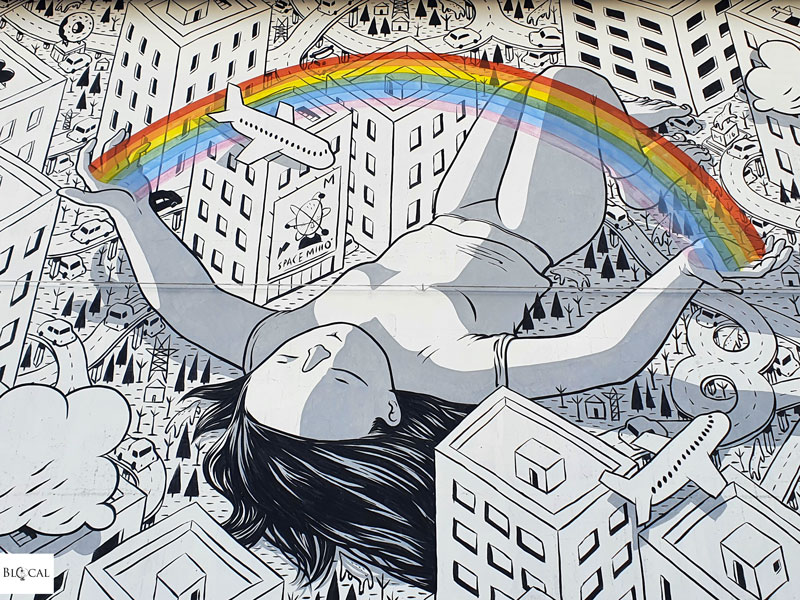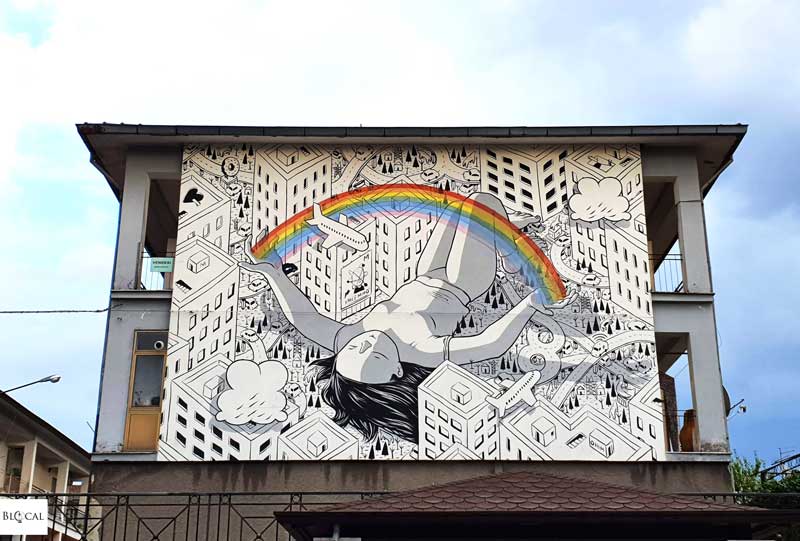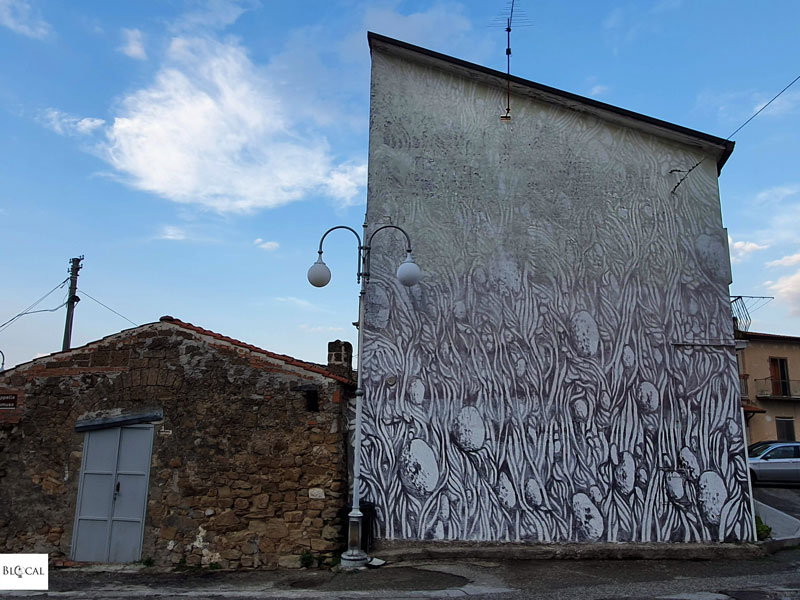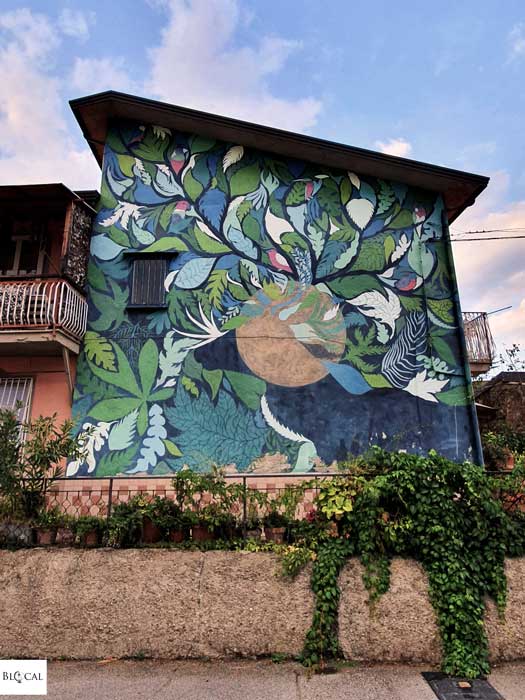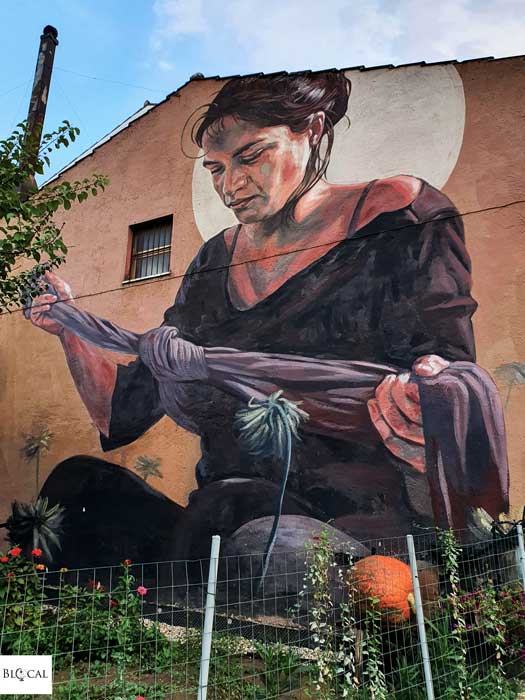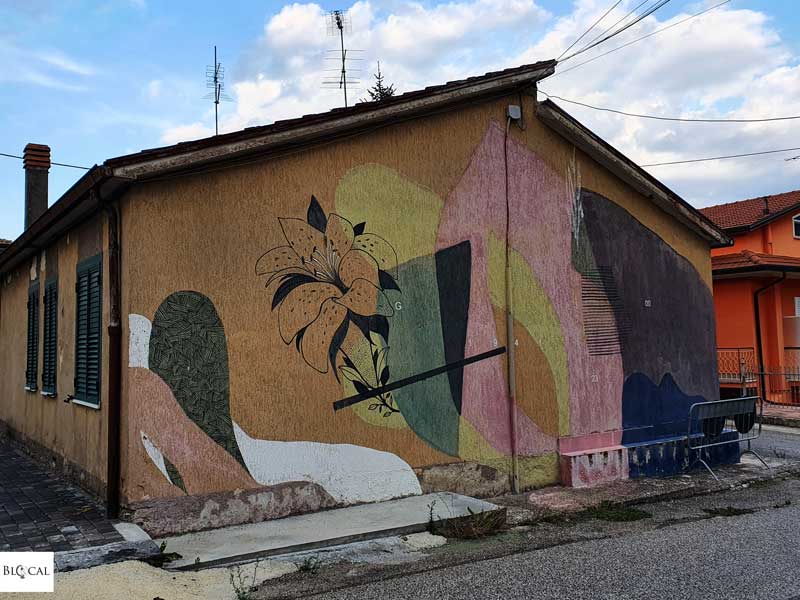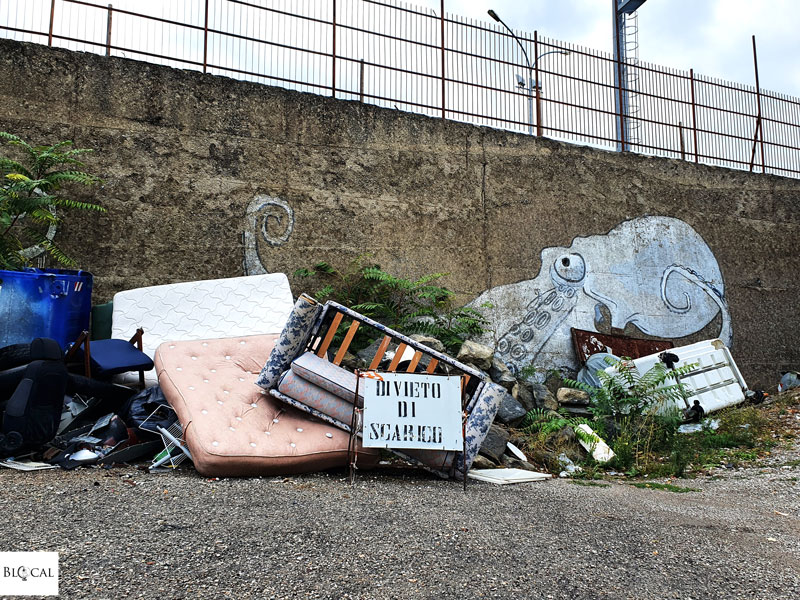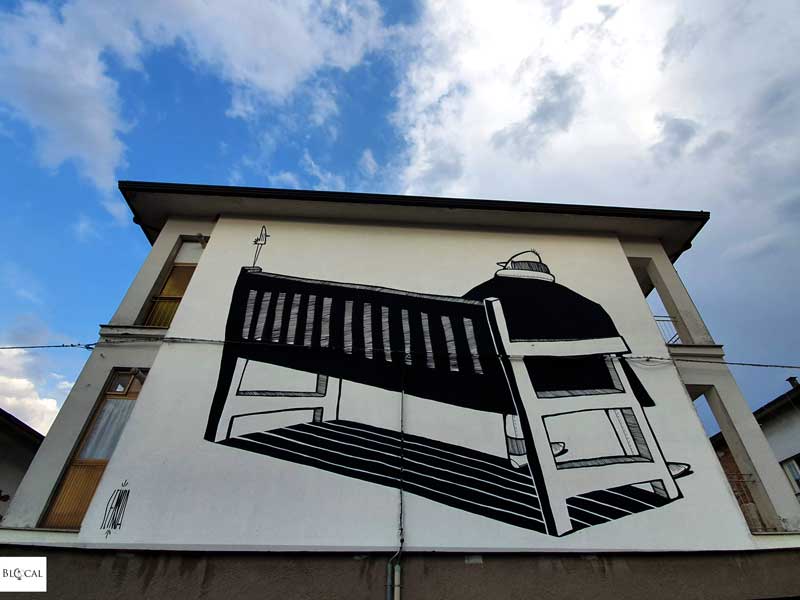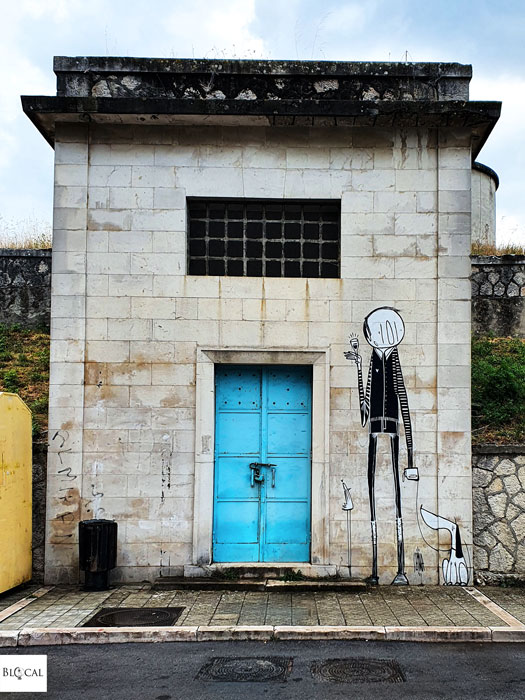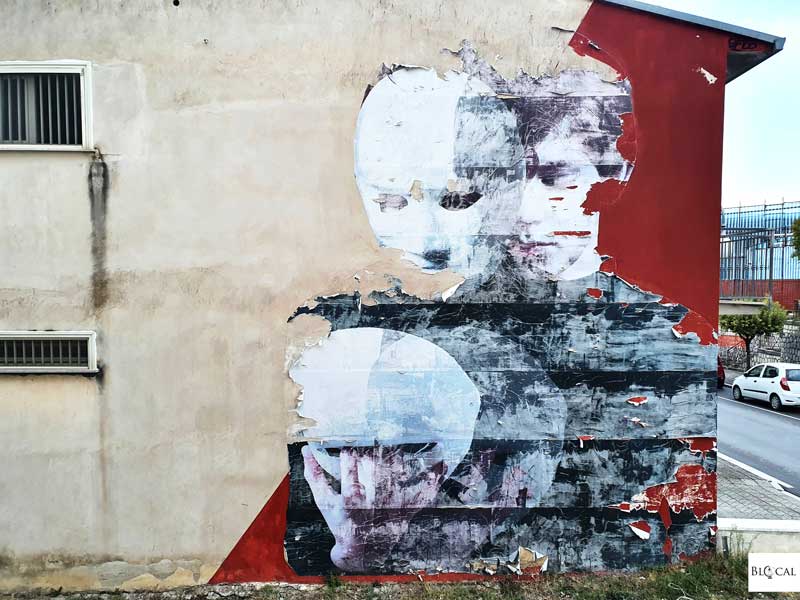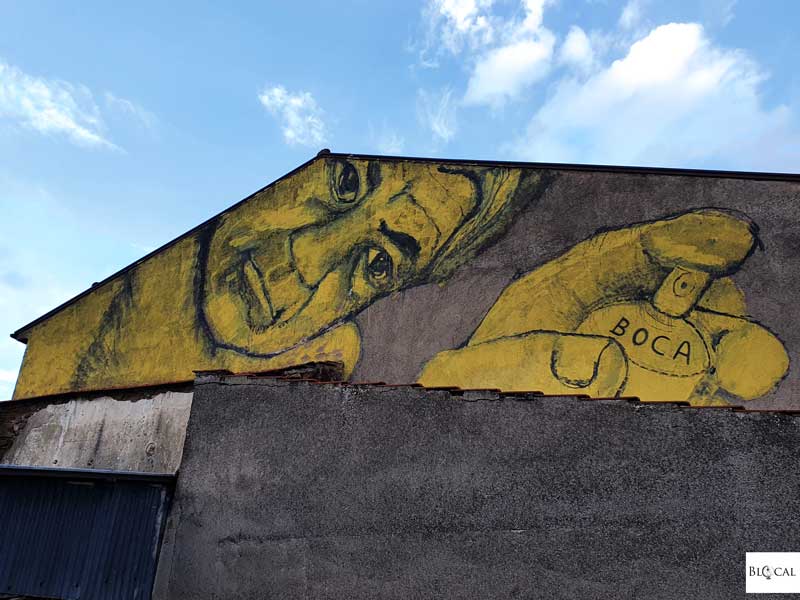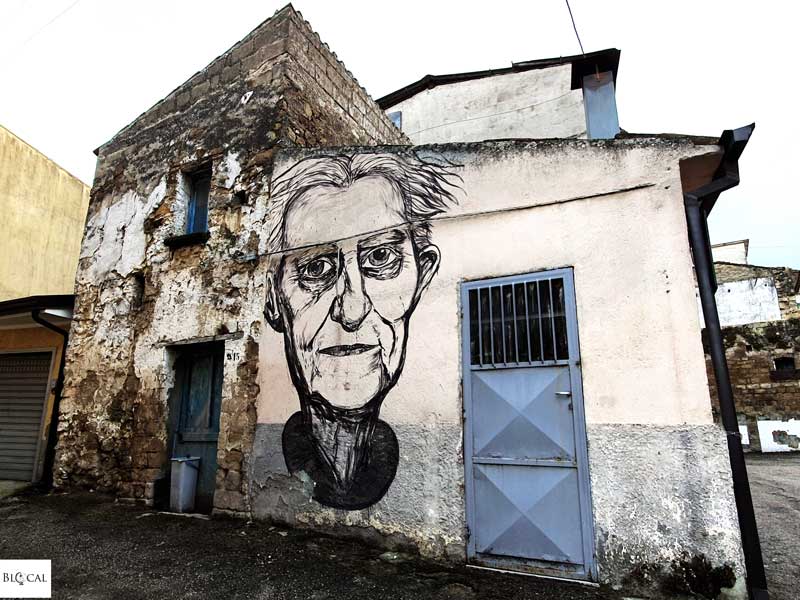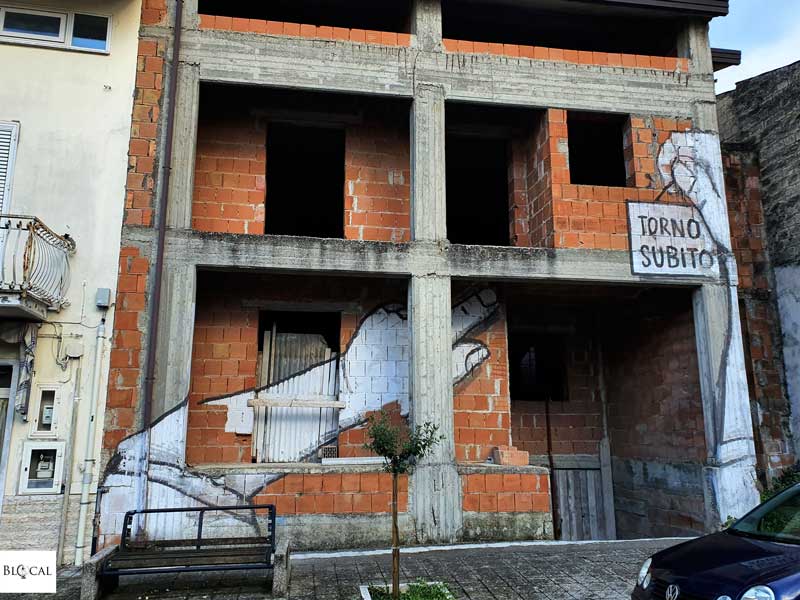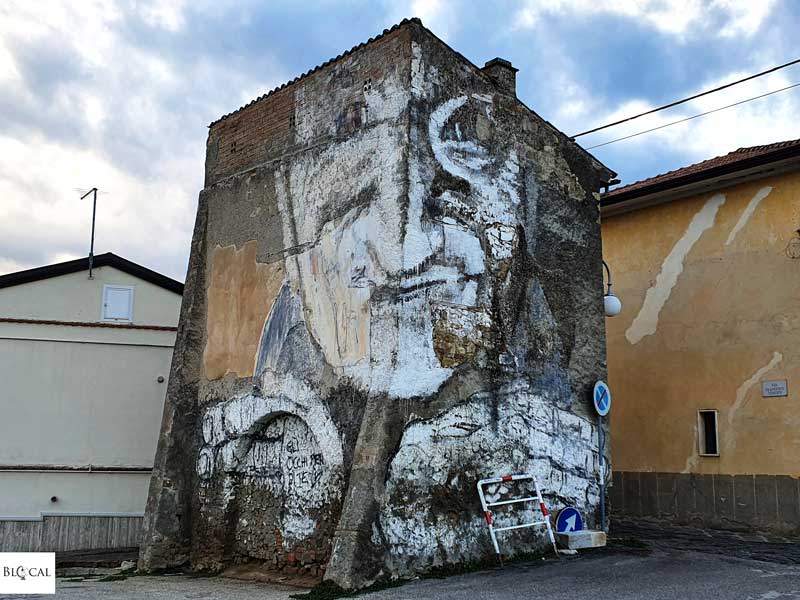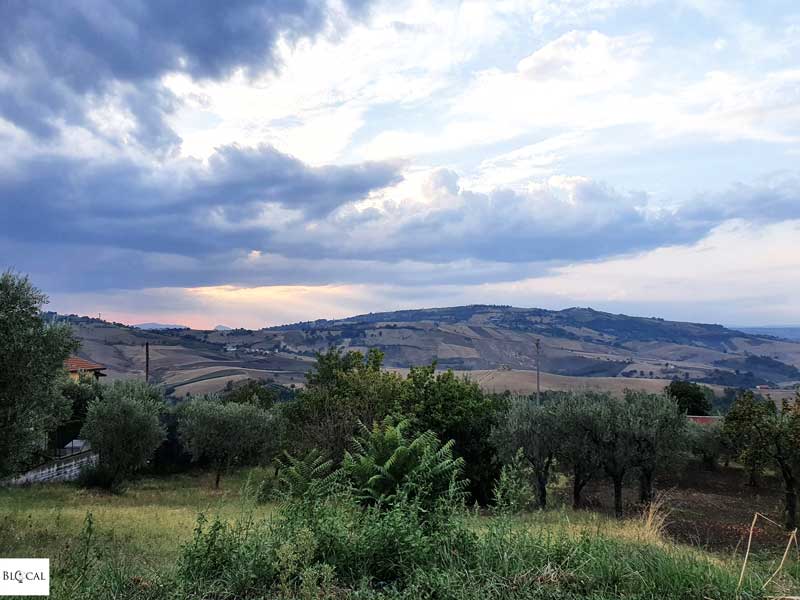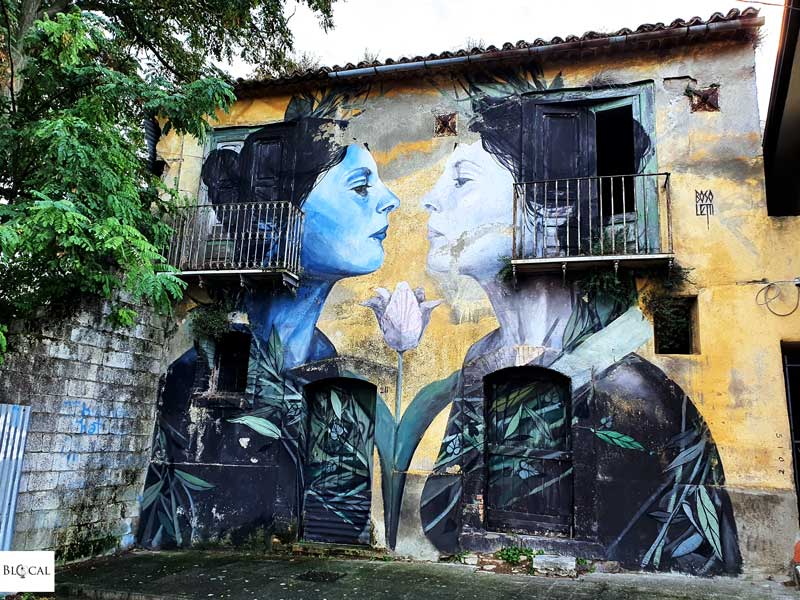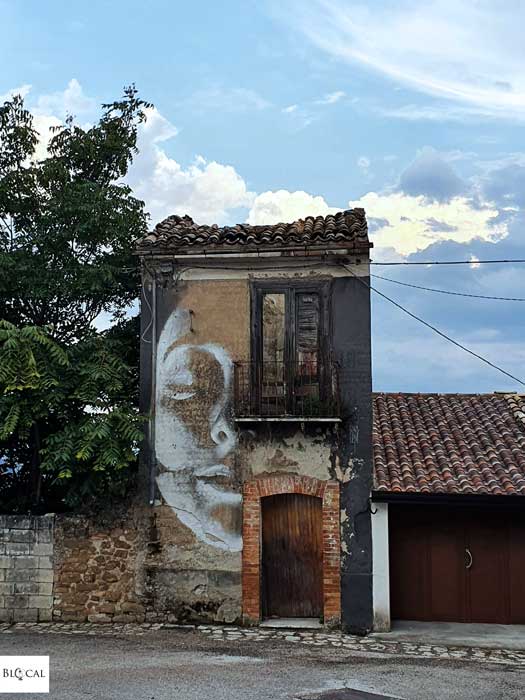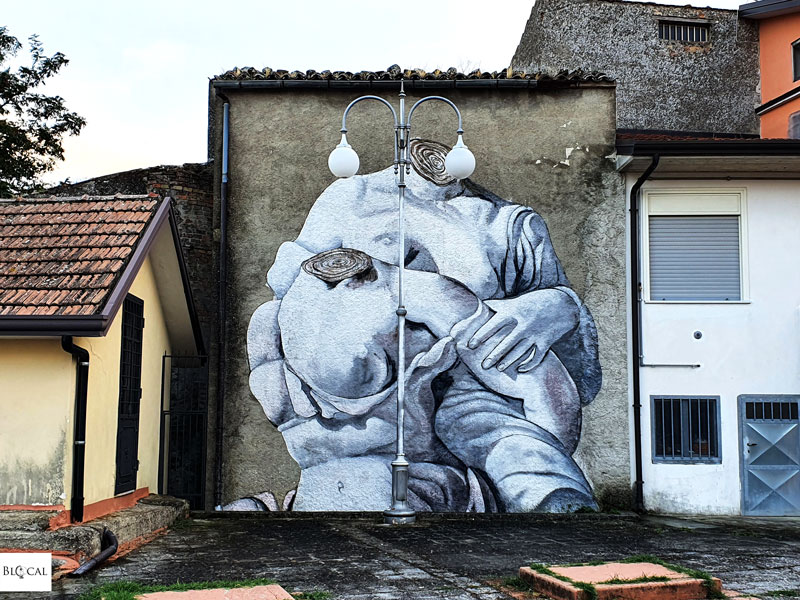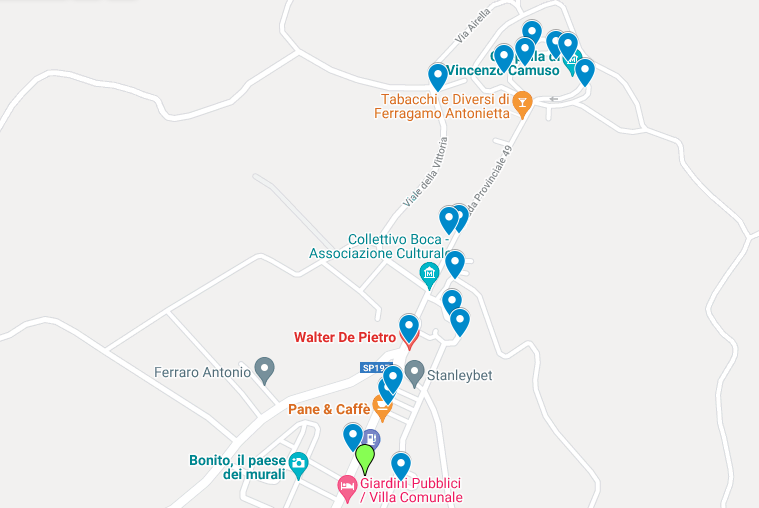When I finally reached Bonito, a village at the top of the Campanian Appennino, a storm started brewing. Luckily, it was one of those quick summer storms soon followed by a beautiful rainbow, which happened to also be the visual image I had of Bonito prior to my long overdue visit.
Salvatore Ferragamo inspired Street Art in Bonito
Bonito is home to one of the first street art projects in Italy. The native Colletivo Boca welcomed the first street artists in 2011, ushering in a vibrant adventure that culminated in 2016 with the Impronte project, which established a dialogue between street art and the creative talent of the Italian shoe designer Salvatore Ferragamo.
Born in Bonito in 1898, Salvatore Ferragamo emigrated to the United States when he was 16, where he became an acclaimed shoe designer. He dressed all the movie stars who stopped at his “Hollywood Boot Shop,” which he opened in 1923, and kept producing iconic shoes for Hollywood movies even when he moved back to Italy.
In 2016, five street artists were invited to reinterpret Salvatore Ferragamo’s signature designs and turn them into large-scale murals at his birthplace.
Millo drew inspiration from the rainbow sandals that Salvatore Ferragamo made for Hollywood star Judy Garland in 1938, which appeared in “The Wizard of Oz.” Titled “Blind,” Millo’s mural in Bonito is an invitation to don’t fail to see the magic inside of us, our beauty and uniqueness, here represented like a rainbow.
Read also: Millo at work in Pescara, Italy
Tellas chose a bootie with handpainted, natural patterns on it, which surely reminded him of the abstract nature motifs he paints all over the world. Like it’s often the case with Tellas’ non-urban aesthetics, “In the heart of Irpinia” is done in different tones of a single color, which Tellas derived both from Salvatore Ferragamo’s famous shoe model and from the surrounding nature, whose hues go from the red of the grape to the yellow of the wheat.
With the shape of a rhino horn and the skin of an antelope, the shoe model chosen by Gola Hundun recalls his deep study of the animal world. The flora and fauna protagonists of his mural “Chiarezza di luna” (moonlight) allow him to construct a peculiar narrative, an allegorical image reflecting the artist’s utopia of a balanced, peaceful relationship between man and nature.
The Argentinian muralist Milu Correch reinterpreted Salvatore Ferragamo’s golden sandals with flowers hand painted on a cork wedge covered with an elegant black satin. At the center of the mural is a woman tying a knot (“Nodo,” Italian for knot, is the title of Milu Correch’s mural), an ordinary gesture that still manages to bring out the femininity of the protagonist.
Read also: One week with Milu Correch
Finally, Giulio Vesprini created one of his graphic, architectural murals using the color palette of a popular shoe model that Salvatore Ferragamo created in 1941, hence the number “1941″ written in the middle of the artwork.
More Murals in Bonito
Many street artists have left their sign in Bonito even before the street art project dedicated to Salvatore Ferragamo. The Boca Contest Art is actually one of the first street art projects in Italy and it led the road to many similar projects bringing great public art to small villages.
In 2014, Nemo‘s released “No Triv,” a thought-provoking piece warning against the dangers of drilling. The street artist hopes that the inhabitants of Bonito will not follow the bad example set by the neighbouring Basilicata region. This mural is part of the “Before/After” series, which was the street artist’s favorite method of work back then. It consists in painting skeletons as a base of his murals, which are then covered with layers of old newspaper on which Nemo’s draws the skin of his characteristic human figures. A skin that erodes and peels off over time, revealing the innards of his creation underneath.
Next to it, an octopus by Poki feels like an ironic installation if read next to the sign that prohibits the disposal of waste in the midst of an improvised junkyard.
On his painting trip all around Italy, the Brazilian artist Alex Senna stopped in Bonito to pay homage to the village through his youthful and emotional black-and-white illustrations. The poetic narrative of the street artist is rooted in the intimate lives of his characters, vivid expressions of human love and relationships. In Bonito Alex Senna painted the lack of it, and so in “Solitude” we see an old man sitting alone on a bench, an image that is the reverse of what he saw spending some time in Bonito Irpino and mingling with local old men chatting outside all day long.
At the other side of the bench, Alex Senna painted his signature little bird, which we also find in a quick piece he spontaneously did at the entrance of the village.
In front of Alex Senna’s mural there’s an old paste-up by Bifido, whose street art production is based on photography. This particular poster art piece shows Basil Hallward (the artist infatuated by Dorian Gray, author of the infamous portrait) taking off his mask.
Among the first guests of Collettivo Boca street art project is Collettivo FX, an artist collective born in 2010 in Reggio Emilia. Collettivo FX is known for their rough and energetic creations on walls, enormous roller paintings done with custom extension poles. Fast and gritty in its style, Collettivo FX street art focuses on the emotions arisings in the viewers and the story told by their pieces.
Many stories draw inspiration from the local community, often reflecting on social issues, but sometimes through itinerant projects and thematic series, such as the one about local madmen. Thus, in Bonito they chose to tell the story of Giulio, a local guy who, when the student protests of the 1970s powered down, kept writing political mottos on the walls of Bonito. Giulio is portrayed with his inseparable black spray can as a graffiti writer ante litteram.
Another powerful portrait they left in the streets of Bonito is a tribute to last century’s local painter Cesare Paduano. Many inhabitants of Bonito still cherish a portrait done by Cesare Paduano, perhaps when they were little kids and their parents had them dressed up for the occasion. Collective FX was able to capture the locals’ affection for this man, and perhaps even the nostalgia for a time when landscape paintings were on sale next to newspapers at the local newsstand.
Another piece done by Collettivo FX in Bonito aims at highlighting a building left unfinished in the city center. On the skeleton of the building hangs a sign saying “Back Soon,” while on a door obstructed by construction debris and regular rubbish is written “Knock.”
Finally, Collettivo FX painted “Zi Alfonso,” a tribute to a local farmer whose historicity is represented in a countenance deeply ploughed by wrinkles. On an especially porous and crumbling wall, the ability of the artist to paint expressive portraits with only a black sign at the top of an extension pole is beyond impressive.
The location of many murals in Bonito appears to suggest a panoramic path that reveals the beauty of the natural landscape of this hilltop village. The artworks in the narrow alleys push visitors towards panoramic terraces where our eyes can gaze from the mural to the valley and back.
- Read also: “Discovering Campania, Avellino and Herculaneum“
Being among the first street art initiatives in Italy, Bonito treasures some examples of the early style of now renowned street artists, like the Argentinian Francisco Bosoletti, who left a mural on a panoramic road. “Soul for sale” is a colorful mural in line with what the artist used to paint back then.
Back in Bonito in 2018, Bosoletti painted a triptych mural that quickly became viral on social media. The artwork that took over the internet is actually a composition made of three different pieces on three different walls. The main piece is the countenance of a woman, done only with white paint. She is evanescent like a ghost, like the past of a derelict house emerging from its crumbling walls. The second part of the triptych was animated by a living fire, the element at the core of the artist’s concept for this piece. The artwork fits into a larger tradition of celebration of the fire as the principle of creation and destruction, illumination and purification, of a tangible and – at the same time – immaterial entity. In the final composition, which takes the name of “Genesis,” the actual fire burns in front of the woman’s belly, thus representing the primordial nucleus of vital energy, the vital spark present in all things.
In “Lovers (Cement Age),” Carlos Atoche gave human form to two trees that have been cut down in that same square. The artist also painted the inside of an abandoned church down the valley, but the road to it was so muddy and slippery that eventually I gave up the visit. A wonderful reason to return to Bonito when the weather warms up again.
You can find these murals in my Bonito Street Art Map!
